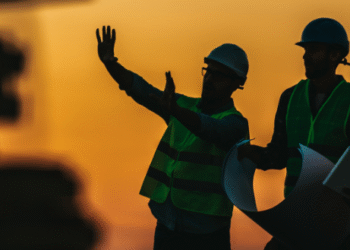Embodied carbon refers to the carbon emissions generated during the construction process. The extraction, manufacturing, transportation and refinement of raw materials, along with the disposal and installation of old supplies all lead to embodied carbon emissions. This is limited not only to construction but also to utilities and natural oil and gas companies.
Embodied carbon accounts for about 11% of greenhouse gas emissions, but with the expected increase in construction initiatives predicted over the future decades, this figure is expected to rise without action.
Looking at the potential environmental hazards a significant rise in embodied carbon could bring, some experts want a mandatory limit on such emissions.
Reducing embodied carbon emissions associated with construction is a vital step if countries are to meet their decarbonisation goals. Some countries have introduced laws that mandate a limit for upfront carbon emissions for all building projects over 1,000 square metres from 2027. Increasingly, construction firms are also required to assess and create a report on whole-life carbon on all residential projects over 1,000 sqm from 2023 and for residential projects from 2025.
A recent study by Autodesk found that 82% of Architecture, Engineering and Construction (AEC) companies now have a sustainability team. Autodesk added that 74% of AEC firms are seen to be directly investing in construction technology to improve their company’s sustainability.
These developments point to an immediate need for contractors to bring down their embodied carbon footprint. Focusing on reducing carbon emissions from what industries develop has now become a necessity.
Why a necessity?
Aside from the need to protect the environment, there are many reasons for industries to prioritise a reduction in their embodied carbon emissions.
- more countries are likely to introduce a legal limit on embodied carbon
- By reducing embodied carbon, fewer resources are manufactured. This reduces costs and risks for companies around resource availability making it an important step in increasing profits.
- When it comes to granting planning permission, companies that are committed to reducing embodied carbon emissions are in some cases preferred in tenders.
In an effort to keep pace with changing practices and expectations from clients and end users, construction companies are adopting construction technology software to improve efficiencies.
The role of construction technology
There are many technologies that will play a role in helping construction companies reduce their embodied carbon emissions. Overall, they can bring down the percent of waste generated to 1% from about 10-15%. Machine controlled devices will increase installation accuracy and reduce greenhouse gas emissions, and use of modern methods such as modular and prefabrication can reduce emissions by 40%.
- 4D Mapping: Drilling, excavation and the associated use of heavy equipment are major contributors of greenhouse gas emissions. 4D mapping can help industries reduce their greenhouse gas emissions by erasing the need to use traditional methods of exploration.
- 3D Printers: There are examples of 3D printed buildings in the Middle East, particularly in the UAE and Saudi Arabia. But there has not yet been a shift from pilot studies to mainstream use. However, the promise of 3D printing is that it will increase automation in the construction industry, reducing waste, minimising the number of people required onsite, bring down development times and therefore emissions from onsite equipment and reduce transport miles.
- Digital Twins: An exact replica of an asset or a building, digital twins increase work and supply chain efficiency although their main benefit will be at the operational phase, providing real-time insights into an asset. A study by EY found that digital twin use can reduce greenhouse gas emissions by 50%.
Usage examples
In South Korea, a 2021 study by Hanyang University found that industrialised construction helps to reduce greenhouse gas emissions by 40% when compared with emissions to a similar build using traditional methods of construction.
The Cooper Electrical Construction Company used Trimble’s SysQUE Detailing Software to create detailed design models that in turn helped the company to build models offsite and increase production.
It helped the company to move 60% of their workforce who were involved with the conduit and cable tray fabrication tasks from onsite to their offsite fabrication facility. This change helped to reduce emissions, increase productivity and safety, and enhance overall quality.















